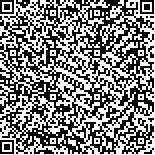| 摘要: |
| [摘要] 目的 对患者血清胆红素含量与冠状动脉粥样硬化性心脏病(CHD)的严重程度、临床分型进行相关性分析。方法 选取2016-01~2016-12该院住院的183例CHD患者作为CHD组,并选择同期住院其他疾病(呼吸疾病、心率失常、肺炎等)患者90例作为非CHD对照组。根据冠脉造影的结果将CHD组患者分为单支血管病变组62例,双支血管病变组77例和多支血管病变组44例。根据患者病史及临床表现分为ST段抬高型心肌梗死(STEMI)组41例,急性非ST段抬高型心肌梗死(NSTEMI)组43例,不稳定型心绞痛(UAP)组49例和稳定型心绞痛(SAP)组50例。结果 CHD组患者总胆红素(TBIL)值、间接胆红素(IBIL)值和直接胆红素(DBIL)值均显著低于对照组(P<0.05);多支病变组患者血清中TBIL、IBIL和DBIL含量显著低于双支及单支病变组,且双支病变组显著低于单支病变组(P<0.05)。将冠脉病变的支数与TBIL、IBIL、DBIL含量进行相关性分析,相关系数分别为r=-0.433,P<0.05;r=-0.392,P<0.05;r=-0.415,P<0.05,血管病变的支数与TBIL、IBIL、DBIL水平呈负相关。STEMI组和NSTEMI组TBIL、DBIL和IBIL水平显著低于UAP组和SAP组,并且UAP组TBIL值显著低于SAP组(P<0.05)。将冠心病的不同临床分型与TBIL、DBIL、IBIL值进行相关性分析,相关系数分别为r=-0.388,P<0.05;r=-0.314,P<0.05;r=-0.353,P<0.05,TBIL、DBIL和IBIL值随冠心病严重程度增加而降低。结论 血清胆红素水平与冠状动脉粥样硬化血管的病变支数、CHD严重程度有负相关性,其水平可以反映冠脉病变的严重程度及斑块稳定性。 |
| 关键词: 血清胆红素 冠状动脉粥样硬化性心脏病 病变 相关性分析 |
| DOI:10.3969/j.issn.1674-3806.2018.01.15 |
| 分类号:R 541.4 |
| 基金项目: |
|
| Correlation between serum bilirubin and coronary atherosclerotic heart disease |
|
WU Shao-ping
|
|
Department of Cardiovascular Internal Medicine, Zhangzhou Hospital Affiliated to Fujian Medical University, Fujian 363000, China
|
| Abstract: |
| [Abstract] Objective To analyze the correlation between bilirubin and the severity of lesions and the clinical classification of coronary atheroscierofic heart disease(CHD).Methods From January 2016 to December 2016, 183 patients with CHD were chosen as the CHD group and 90 other patients with non-CHD during the same period were chosen as the control group. The CHD group was divided into the single lesion subgroup(n=62), double branch lesion subgroup(n=77) and multiple vessel lesion subgroup(n=44) according to the results of coronary angiography. The CHD group was divided into the STEMI subgroup(n=41), NSTEMI subgroup(n=43), UAP subgroup(n=49) and SAP subgroup(n=50) according to the patients′ medical history and clinical features.Results The levels of total bilirubin(TBIL), direct bilirubin(DBIL) and indirect bilirubin(IBIL) in the CHD group were significantly lower than those in the control group(P<0.05). The levels of TBIL, DBIL and IBIL decreased with the increasing numbers of vascular lesions(P<0.05), and the levels of TBIL, DBIL and IBIL were negative correlation with the numbers of vascular lesions(r=-0.433, P<0.05), (r=-0.392, P<0.05), (r=-0.415, P<0.05). The levels of TBIL, DBIL and IBIL in the STEMI and NSTEMI subgroups were lower than those in the UAP and SAP subgroups, and the level of TBIL in the UAP subgroup was lower than that in the SAP subgroup(P<0.05). The levels of TBIL, DBIL and IBIL were negative correlation with the numbers of vascular lesions(r=-0.388, P<0.05), (r=-0.314, P<0.05), (r=-0.353, P<0.05).Conclusion The level of serum bilirubin is negatively correlated with the number of vascular lesions and the severity of CHD, which shows that the level of serum bilirubin may indicate the severity of coronary catery disease and the stability of plaques. |
| Key words: Bilirubin Coronary atherosclerotic heart disease(CHD) Lesions Correlation analysis |

